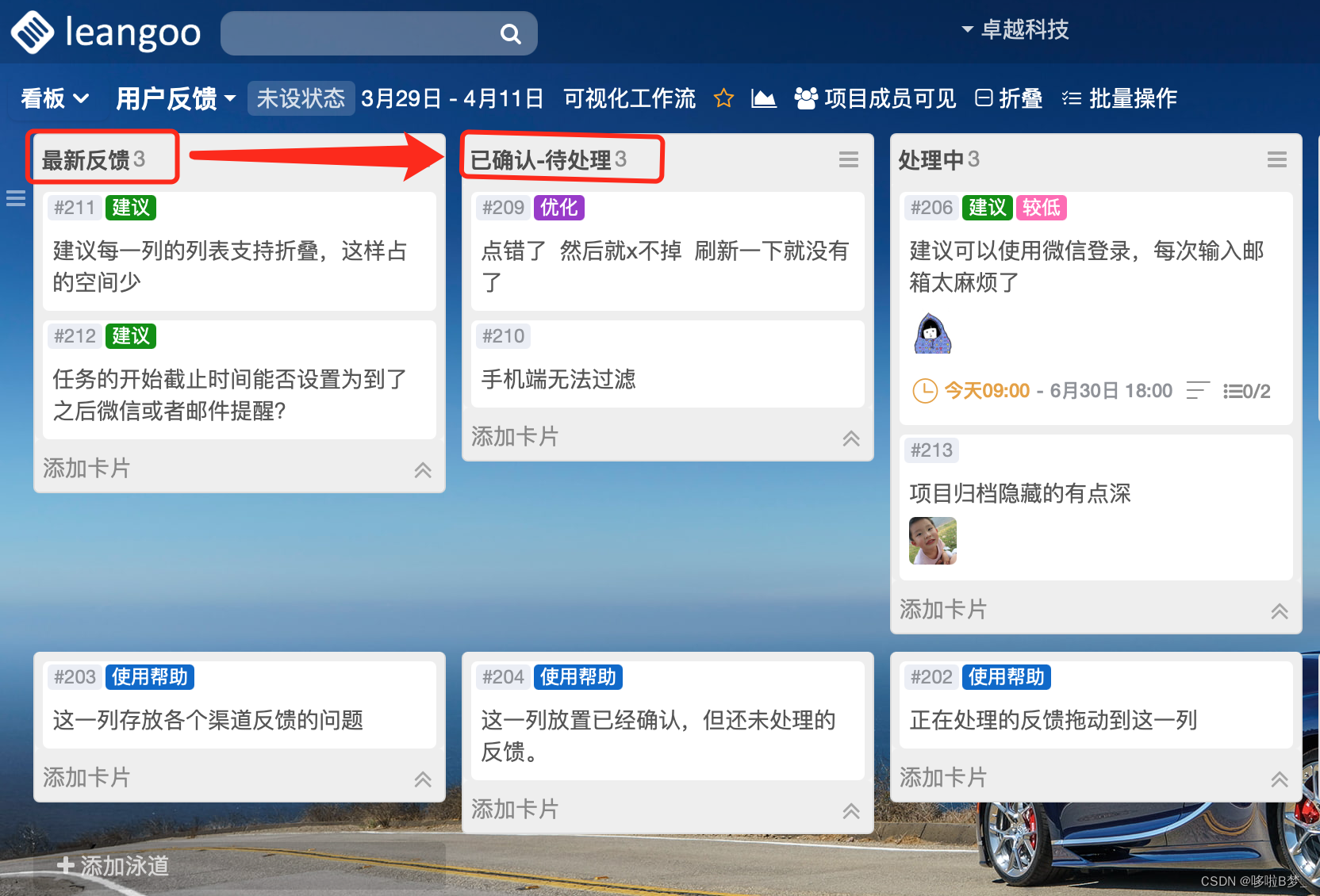After a product is released to the market, it is bound to receive user feedback from various channels. Good feedback is conducive to the establishment of the company's brand, and critical and negative feedback can help us understand the most real needs and usage scenarios of users, which is conducive to optimizing products and improving services. It can further improve user stickiness.
When managing user feedback, the user feedback processing process can be defined by itself, usually the feedback process is as follows:

You can use Leangoo's lightweight Kanban to help the team quickly build a user feedback process:

collect feedback
The sales or operations team creates a "User Feedback" Kanban, where user feedback is displayed in the form of cards, one for each card. A detailed description of the feedback issue can be added within the card.
The flow of feedback status is performed in the form of a list.
Tags can be used to classify feedback, such as the priority or classification of feedback, so that when the feedback is confirmed later, the feedback processing method and importance can be quickly identified.

Feedback handling
The product manager needs to regularly check the problems in the latest feedback, sort them out, move the valuable feedback that can be supported currently to the "confirmed to be processed" list, and arrange personnel to deal with it later.
Move the temporarily unsupportable or unreasonable feedback to the "closed/rejected" list, and describe the reasons for closing/rejected in the comments and @relevant personnel to reply to the user.

notify user
After the issues reported by users are successfully launched, move the processed issues to the "Completed" list, and @the person in charge of operations or sales. After receiving the task notification, the relevant person in charge will notify the user of the processing result to enhance the customer's confidence in the product and improve word of mouth.
